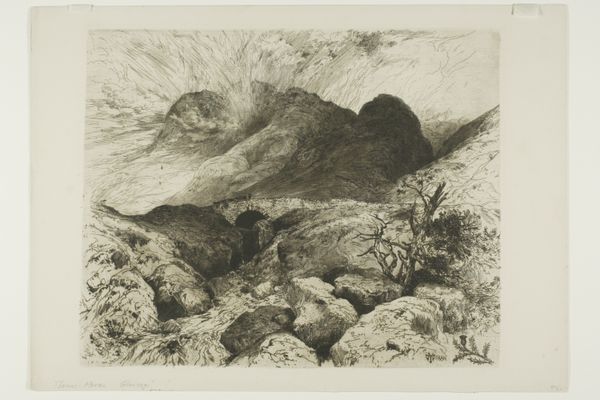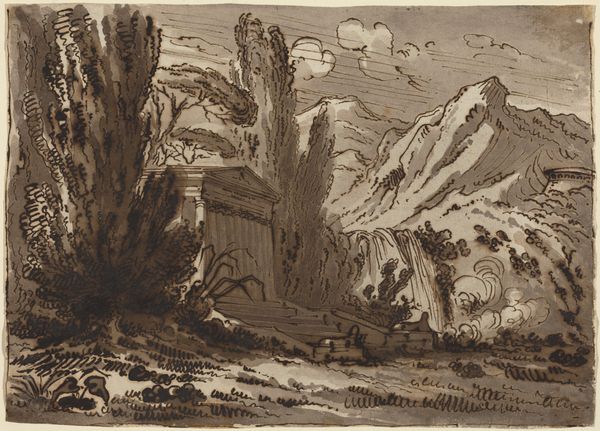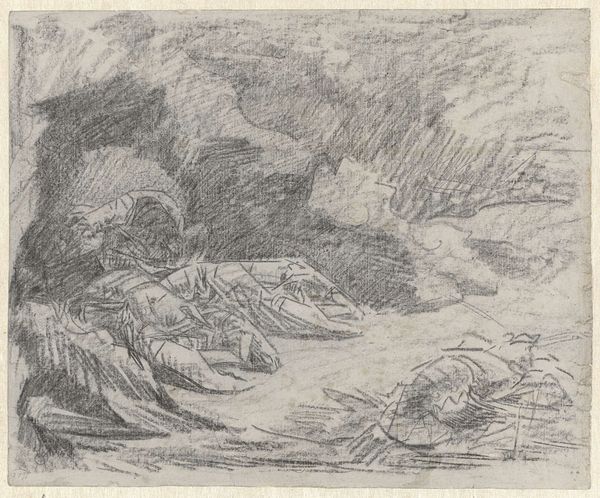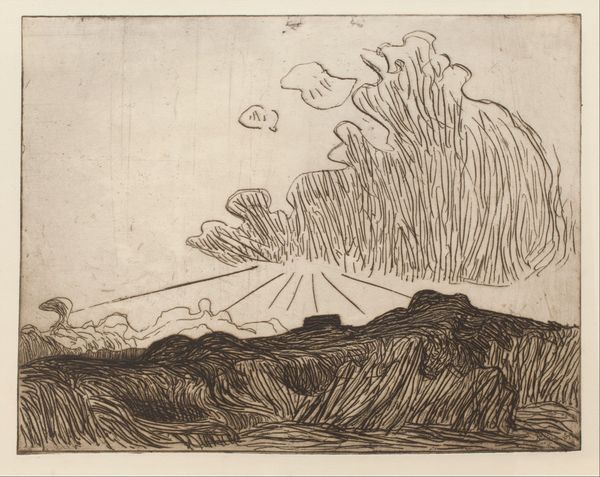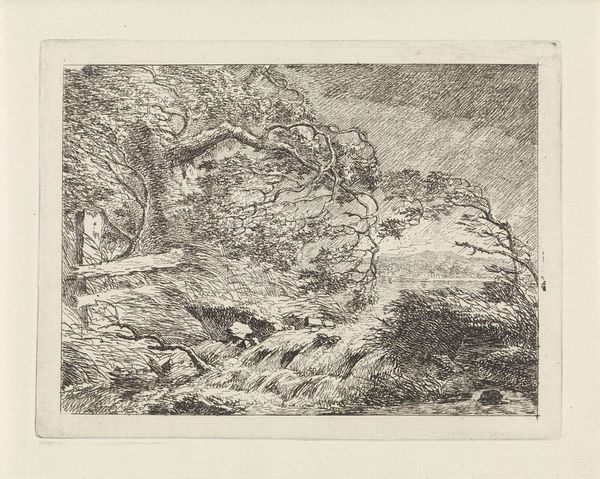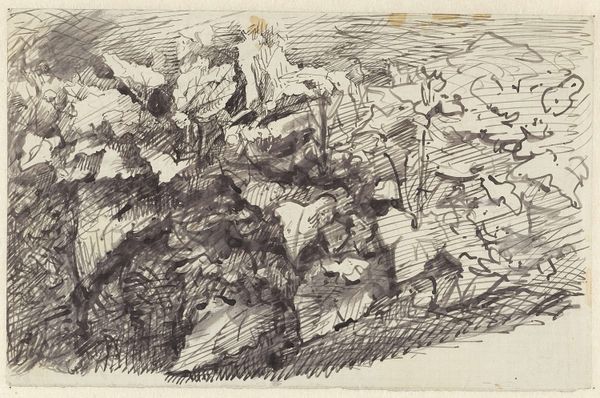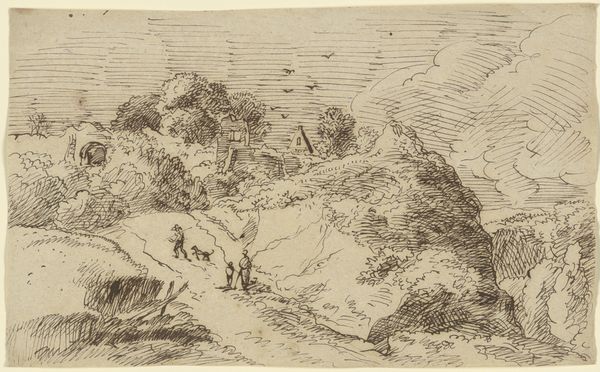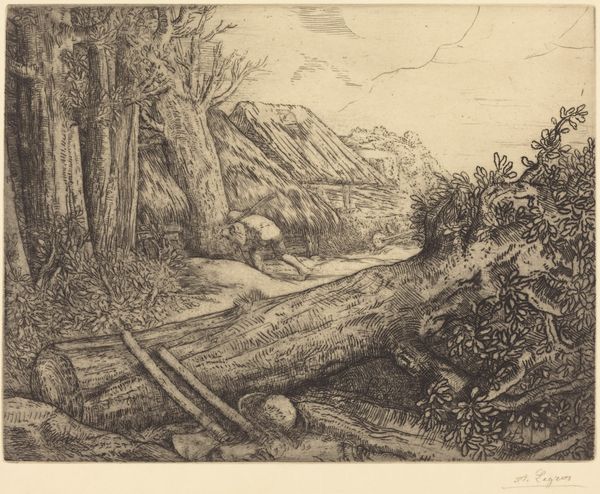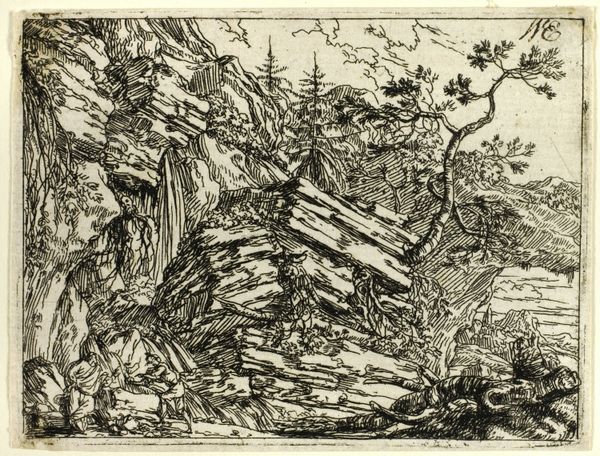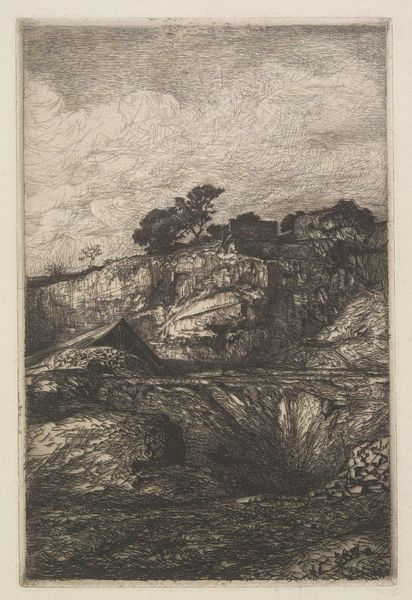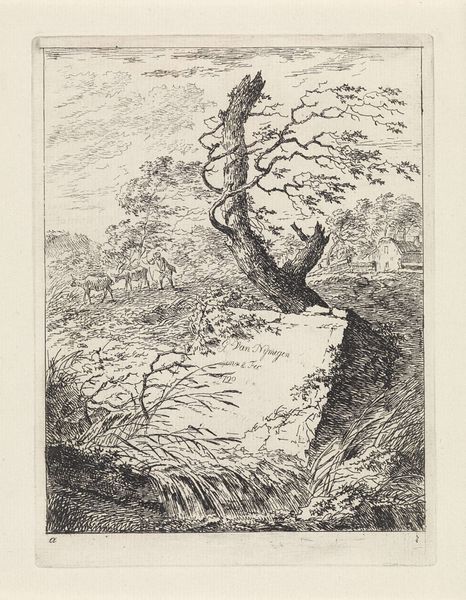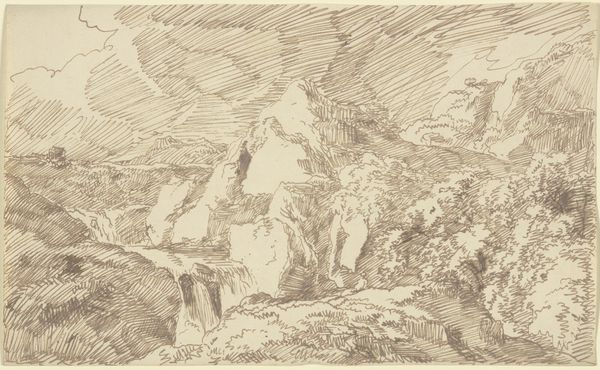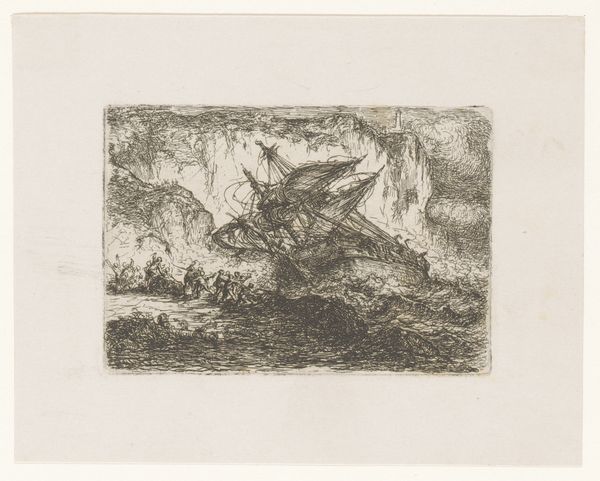
Dimensions: 92 × 150 mm (image/plate); 230 × 307 mm (sheet)
Copyright: Public Domain
Editor: This is Thomas Moran’s etching, “Bridge in the Pass of Glencoe,” created in 1882. The stark landscape immediately strikes me with its wildness. What do you see in this piece? Curator: Beyond its aesthetic qualities, I see a potent example of the romantic idealization of wilderness. During the 19th century, especially as industrialization progressed, there was a burgeoning fascination with untouched landscapes, and artists like Moran played a key role in shaping these perceptions. The very act of selecting and framing this scene suggests a certain political viewpoint. Does the composition speak to any narrative to you? Editor: Perhaps the idea of man versus nature, considering the tiny bridge compared to the vast mountains? Curator: Precisely! Consider also the history of Glencoe. It was the site of a infamous massacre in 1692, a dark episode of clan warfare and government betrayal. Moran’s choice to depict this place, rendered in a style emphasizing the sublime, may be seen as a way of subtly invoking historical memory while contributing to the aesthetic appreciation of the landscape. Do you find the picturesque nature of this romantic image complicated when knowing this? Editor: Absolutely. The picturesque seems to mask a violent past. It's unsettling to think how artistic portrayals can sanitize or overlook historical realities. I learned a lot about how political and historical narratives impact something that simply appears to be an image of nature. Curator: And I'm reminded how artists actively participated in constructing national identity and negotiating complex histories through landscape imagery. A reminder that the creation of images and our reading of images contribute and shape culture.
Comments
No comments
Be the first to comment and join the conversation on the ultimate creative platform.
